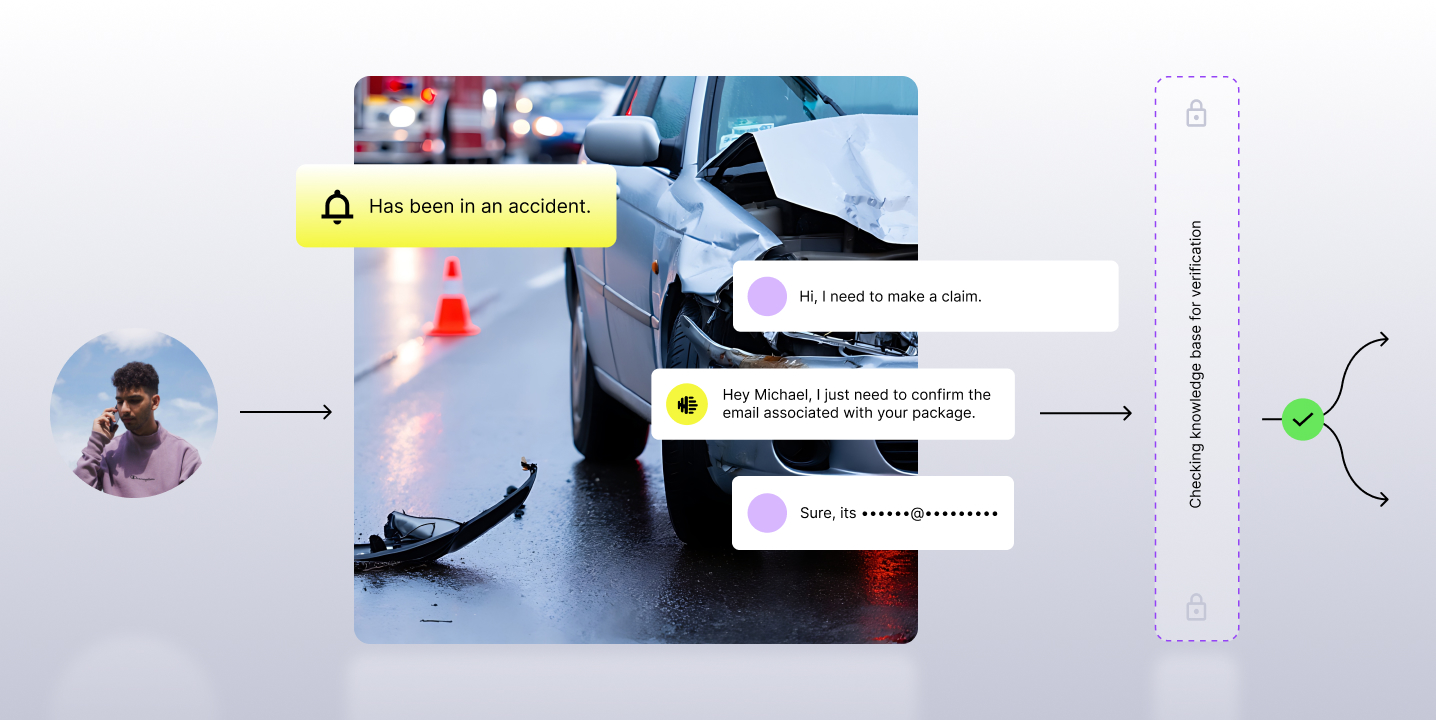But First, What is Contact Center AI?
Contact center AI, often abbreviated as CCAI, represents a transformative paradigm shift in the way businesses engage with their customers. At its core, contact center AI harnesses the power of artificial intelligence and advanced automation technologies to optimize customer interactions, streamline operations, and enhance overall customer experience.
In essence, contact center AI serves as the digital backbone of modern customer service operations. It seamlessly integrates into a company's existing contact center infrastructure, working in tandem with human agents to deliver efficient and personalized support to customers across various communication channels, such as phone, chat, and email.
The key components of contact center AI include natural language processing (NLP), machine learning, speech recognition, and data analytics. These technologies empower AI-powered virtual agents and chatbots to comprehend customer inquiries, resolve common issues, and even handle complex tasks with a high degree of accuracy. Simultaneously, contact center AI assists human agents by providing real-time insights, relevant information, and predictive analytics, allowing them to deliver more informed and efficient customer interactions.
By automating routine tasks, reducing wait times, and ensuring consistent service quality, contact center AI not only drives operational efficiency but also cultivates improved customer satisfaction and loyalty.
This introduction explores the fundamental concepts of contact center AI, setting the stage for a deeper dive into its benefits and uses for revolutionizing the contact center quality management process.
The Advantages of Contact Center AI Respective to Contact Center QM
Originally, contact center AI emerged as a result of the inefficiencies of highly manual traditional quality management (QM) programs. Organizations struggled to fully-understand performance, monitor mission-critical KPIs and compliance, and better enable their agents with relevant training.
Contact center AI, built around analytics-enabled quality management, radically transforms an organization’s quality programs in a number of ways:
Before contact center AI
- QA is Manual Low Call Coverage: Quality checks take 30+ minutes per call, analysts use lengthy checklists, and scoring is subjective and calls selected at random.
- Transcription Inaccurate and Simple: Accents, overtalk, industry specific terms, and spotty connectivity make speech-to-text transcription challenging.
- Lack of Benchmarking: Performance is assessed from a few scored calls and minimal benchmarks across the organization.
- One Size Fits All Training: Blanket, one size fits all trainings might not be relevant to groups of agents. Minimal data available to create targeted, impactful coaching programs.
- Low Visibility Across the Organization: Nearly impossible to monitor organization-wide performance and monitor progress.
After contact center AI
- Automates the Tedious Parts of QA: Analyze and score 100% of calls for every agent and identify benchmarks and spot performance trends.
- Improved Transcription Accuracy: Accurate transcription (80+%) at scale delivers full view of performance and insights with confidence.
- Comprehensive Evaluations: Get a full view into every voice call for every agent and enable supervisors to spot trends and identify critical areas of improvement.
- More Targeted Feedback/Coaching to Agents: Provide more targeted feedback to agents and use personal scorecards as reference points for more relevant training.
- Better Performance Analytics and Trends: Operation leaders can identify inefficiencies and trends and improve key metrics with data-driven training.

Top Use Cases for AI-Powered Contact Center QM
Contact center AI provides a wide variety of benefits to improve processes across a contact center's quality management process. Next, we’ll dig into some real-world use cases of how contact center AI and quality automation is used today.
Mandatory compliance tracking
Why It Matters
Regulatory compliance is paramount across all industries, most notably financial, insurance, and healthcare. It ensures the protection of customer data, backed by strict legislation to enforce it. As a result, monitoring mandatory compliance dialogues and categorizing voice calls relevant to specific compliance regulations is mission-critical.
Examples
- Mini Miranda
- Settlement Disclosure
- Recorded Line Message
- PII Redaction (eg. credit card, account number, SSN)
- Lawsuit mentions
Measurable KPIs
- Customer verification %
- Mandatory compliance dialogue %

Openers & closers
Why It Matters
The beginning of a conversation is important from both a customer experience and a compliance standpoint. The end of a conversation is also important for customer experience, and it also is an opportunity to both better confirm how the call went and create next steps.
Examples
- Mention company name
- Self introduction
- Offer assistance
- Customer verification
- Recorded line message
- Thank customer for calling
- Offer further assistance
Measurable KPIs
- Increase positive sentiment
- Decrease negative sentiment
- NPS
- Adherence to brand standards
- Lower average handle time

Supervisor escalations
Why It Matters
Supervisor escalations are a strong indicator of a negative customer experience, a metric for agent call-handling, or an organizational inefficiency. Escalations in any contact center are costly due to the amount of time and resources required to resolve them.
Examples
- Issue cannot be solved by agent
- Issue is outside of the agent’s role
Measurable KPIs
- First call resolution (FCR)
- Supervisor escalation rate
- Average speed of answer (ASA)
- CSAT

Customer sentiment analysis
Why It Matters
Customer sentiment analysis is an indicator of how people feel about a brand, its products, and its service. Simple sentiment analysis is determined based on words alone (what's being said), while advanced sentiment analysis (tonality-based) considers tone and volume as well (what, how, and why it's said).
Examples
- Negative experience based on agent, process, or product/service
Measurable KPIs
- Customer satisfaction (CSAT)
- Reduced negative sentiment
- Improved products and services

The New Era of Contact Center QA Automation is Here
We'd like to introduce you to Auto QA by Observe.AI! Auto QA automatically evaluates voice and chat customer interactions based on QA forms and criteria specified by you, then shows you AI-powered evidence based on specific moments throughout the interaction so you can boost agent performance and drive faster impact on customer experience and revenue generation.
It's human-informed automation at its best. The human talent is kept in-the-loop precisely for strategic areas where they can make the greatest impact, while the machine takes over the tedious manual QA tasks.
If you would like to see more of a product, then request a demo with one of our sales representatives.
The Future of Contact Center AI
The future of contact center AI holds immense promise as it continues to evolve in response to the ever-growing demands of modern customer service. With ongoing advancements in artificial intelligence and machine learning, we can anticipate several key trends and developments.
Firstly, contact center AI will become even more adept at understanding nuanced human emotions and context, enabling it to provide increasingly empathetic and personalized customer interactions. This will foster strong customer relationships and satisfaction.
Secondly, AI-powered analytics will play a pivotal role in predicting customer needs and identifying emerging trends, allowing businesses to proactively address issues and tailor their services accordingly.
Lastly, ethical considerations and data privacy will continue to be at the forefront, necessitating responsible AI deployment and robust security measures.
In conclusion, the future of contact center AI is a dynamic landscape marked by innovation and customer-centricity. As it evolves, it will empower businesses to deliver exceptional service while adapting to changing consumer expectations and technological capabilities.


.png)














